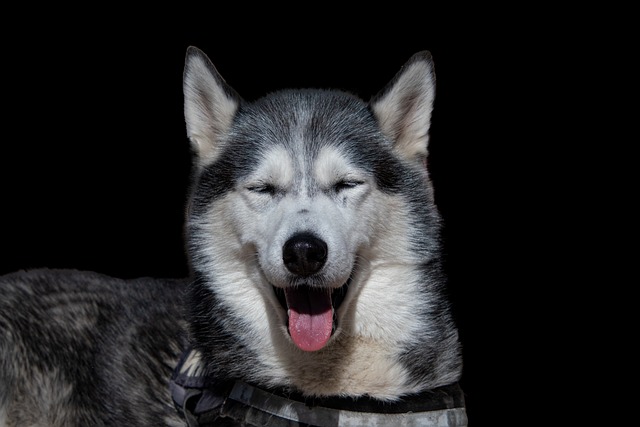
How can I tell if my dog's heatstroke is serious
Let’s be real: It’s a sticky August morning in Los Angeles, and you took your 2-year-old Golden Retriever, Max, for a walk a little later than usual
Bringing home a new puppy is exciting, but if you’re not sure of their age—maybe you found them wandering the neighborhood or adopted from a shelter without papers—it can feel like solving a tiny mystery. Knowing their age matters: it tells you when they need vaccines, how much to feed them, and even what training milestones to expect. Luckily, puppies leave clues all over their little bodies, if you know where to look.
Nature designs puppies to grow in predictable stages, much like human babies. Their physical development—from closed eyes to teething to full mobility—follows a timeline that’s fairly consistent across breeds, even if size varies. Veterinarians rely on these clues, but you don’t need a degree to spot them. Start with the eyes: newborns keep their eyes shut for the first 10 to 14 days, like tiny sleepy bundles. When they open, the eyes are cloudy at first, clearing up by 3 weeks old.
Next, check their ears. Puppies are born deaf, with ears folded tight against their heads. Around 2 to 3 weeks, those ears start to perk up or unfold, and they’ll begin reacting to sounds—maybe a startled jump at a clap. By 4 weeks, most puppies are wobbly but walking, exploring their space with tiny, uncoordinated steps. That’s also when their first baby teeth, called deciduous teeth, start poking through—sharp little nubs that make them chew everything, from your slippers to their littermates’ paws.
 Teeth are the biggest giveaway after the first month. At 6 to 8 weeks, all 28 baby teeth should be in, and puppies look like they’re smiling with tiny, pearly whites. Then, around 4 months, the shedding begins: baby teeth fall out (you might find them in their bed!) as adult teeth grow in. By 6 months, most puppies have all 42 adult teeth—stronger, larger, and ready for gnawing on bones (or your favorite couch corner, if you’re not careful).
Teeth are the biggest giveaway after the first month. At 6 to 8 weeks, all 28 baby teeth should be in, and puppies look like they’re smiling with tiny, pearly whites. Then, around 4 months, the shedding begins: baby teeth fall out (you might find them in their bed!) as adult teeth grow in. By 6 months, most puppies have all 42 adult teeth—stronger, larger, and ready for gnawing on bones (or your favorite couch corner, if you’re not careful).
Size plays a role too, but it’s trickier. A Chihuahua puppy at 8 weeks is already tiny, while a Great Dane at the same age is a floppy giant. Instead of guessing by weight, pair size with other clues. A 10-week-old puppy, for example, is usually more confident on their feet, maybe even running, and responds to their name if they’ve started training.
Knowing a puppy’s age isn’t just about curiosity—it’s key for their care. In many places, puppies need their first round of vaccines by 6 to 8 weeks, including protection against parvovirus, a serious illness. By 12 to 16 weeks, they’ll need booster shots to stay safe, which is also when many communities require registration. If you’re in an apartment, a young puppy (under 4 months) will need more frequent potty breaks—every 2 to 3 hours—to avoid accidents, which keeps both you and your neighbors happy.
Remember, patience beats precision. If you’re still unsure, a vet can give an accurate estimate with a quick exam. Whether they’re 3 weeks or 3 months, your puppy’s age is just one part of their story. What matters most is the love you’re ready to give as they grow.

Let’s be real: It’s a sticky August morning in Los Angeles, and you took your 2-year-old Golden Retriever, Max, for a walk a little later than usual

You're enjoying a summer afternoon at the park when you notice your dog has stopped panting and appears disoriented - their gums are bright red

Let’s paint the picture: You’re in your Denver apartment, watching your 4-year-old Boston Terrier, Ruby, plop down mid-play session with her favorite toy

Many dog owners notice their pets nails seem shorter after regular walks,but how much does this daily activity actually help?The answer depends on where you walk—concrete sidewalks or asphalt streets gently file nails as a dog's paws hit the ground

Most dog owners notice their pup scooting across the carpet at some point, but few connect it to impacted anal glands. These small sacs near a dog’s rectum secrete a scent for marking territory

Most vets agree that regular dog teeth cleaning is key to avoiding painful dental issues later. For healthy adult dogs, a professional cleaning at the vet’s office every 12 to 18 months usually works well.